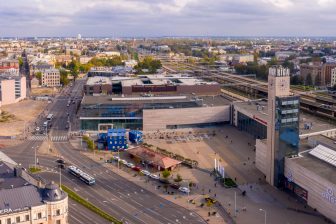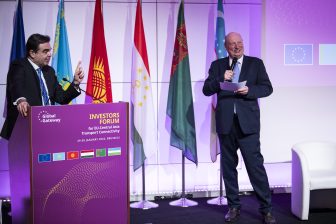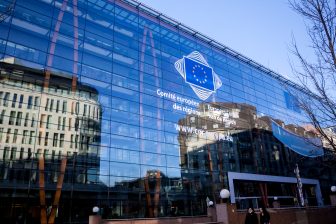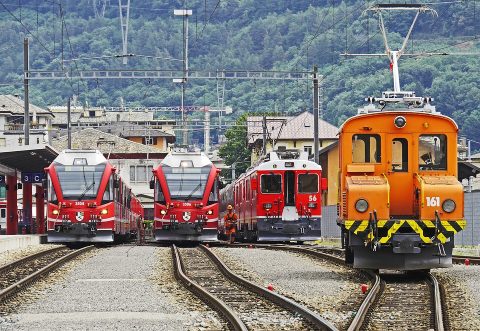
‘Complete harmonisation EU Rail Freight Corridors in 2030 not possible’
Representatives of the European freight industry gathered in Brussels yesterday to discuss how interoperability could be improved on 15,000 kilometre of railway track, connecting the economically most powerful regions of the European continent. It was the first working group meeting of lobby organisation FERRMED.
It is the ambition of the European Commission to considerably improve interoperability in Europe by 2030. To this end it issued Regulation 913/2010, which resulted in defining the Rail Freight Corridors (RFC’s), collectively the Core Network of Europe. The backbone of the European rail network, harmonisation should be accomplished on what is now more than 50,000 kilometre railway. But this is impossible to realise, beliefs FERRMED. “This cannot be done before 2030, we need a smaller project”, said Joan Amorós, President of FERRMED.
EU main trans-Eurasian corridors
The lobby organisation has therefore selected a smaller section of the network, as a working area to begin with. The EU main trans-Eurasian corridors, as FERRMED has named the network, comprises of 15,000 kilometres of railway which run through what is called the EU mega regions – the economically most powerful regions according to economist Richard Florida. “These lines represent sixty per cent of all rail freight traffic on the core network. If we solve problems on this part of the network, we have improved the situation for the majority of traffic on the most important part of the core network”, Amorós pointed out.
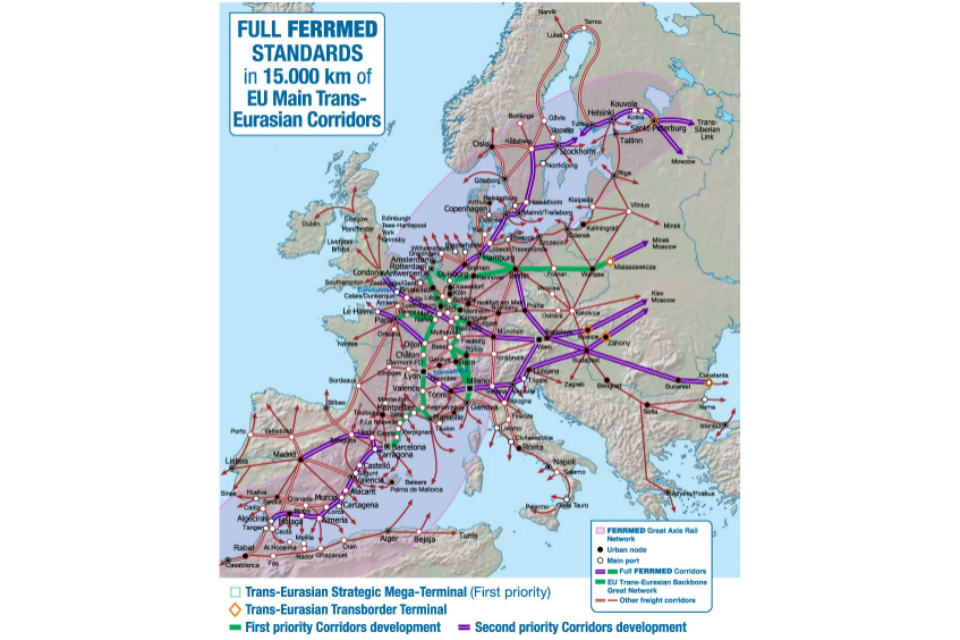
FERRMED has conducted a global study to define this network, explains Valentí Ambrós, Advisor to the president. “We have organised many conferences where harmonisation was discussed by many people, but we realised that conferences alone will not change the situation. So we have approached the market, and analysed what is needed the most and where. Apart from the network, we have defined the main bottlenecks and carried out a cost-benefit analysis.”
FERRMED standards
As a result of the study, the organisation has proposed a set of standards, which, albeit ambitious, could be gradually implemented. These standards are related, but not limited to line electrification, UIC width of tracks, UIC loading gauge, capacity for longer trains, ERTMS roll-out and a centralised traffic system. By implementing these standards, FERRMED hopes to reduce lead times by 50 per cent, increase punctuality by 95 per cent, increase line capacity by 50 per cent and reduc etransportation costs by 25 per cent.
Moreover, the organisation believes that the modal split of rail freight could increase considerably to 30-35 per cent of long distance inland traffic, in addition to improving the conditions of capacity, inter-modality and interoperability of rail on the network. “Currently, rail freight represents 17 per cent of the overall freight market share in Europe; this is the same percentage as fourteen years ago, when FERRMED was launched. Nothing has changed at all!” said Amorós.
Working method
“The main advantage of FERRMED is that we are an multisector organisation, comprising of various types of parties from different industries. We may not design a solution, but we listen to the stakeholders who are dealing with the situation on the ground”, explained Ambrós. To this end, the working groups have been formed. There is a working group related to infrastructure, operations and rolling stock. The first two working groups are subdivided by region.
“The region of the Iberian Peninsula has proven to require most attention. Spain still lacks the infrastructure. A big challenge remains the difference in loading gauge between Spain and the rest of Europa. But the current government is willing to listen, and respond with measures. Quite the opposite is true in France, where it is impossible to convince the authorities that certain changes must be made. We have tried, for example, proposing upgrades on the section Montpellier-Perpignan – a 195 kilometre stretch and a project which required 500 million dollar, a relatively small amount. But this project was not approved.”
Influence policy
In the end, the decision-taking is in the hands of the national governments, Ambrós concludes. The funding may come from the European Commission, but it is up to the member states to apply for these funds and channel them to the right projects, he explained. “We can only advise these governments what is needed, based on the market response. We try to influence policy, but we can not dictate our conclusions.”
As a scretary of the Rolling Stock Working Group, he likes to point to the success story of the modification of 16 wagons recently carried out by SBB Cargo, based on the 5L initiatives, promoted by the universities of Berlin and Dresden in the White paper Innovative Rail Freight Wagon 2030. 5L stands for low noise, light weight, long running, logistics capable and LCC oriented, standards that FERRMED underwrites. After a pilot phase, SBB concluded that the cars are quieter and more powerful than conventionally equipped freight cars, and the trains will soon be operational. This is an example we would like to set fort he wider industry; others can learn from it and follow suit.”



